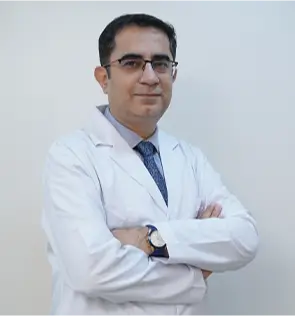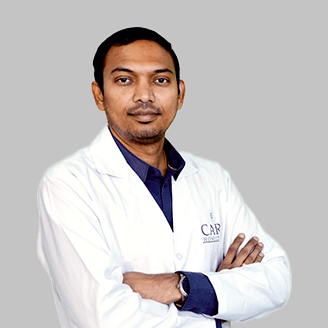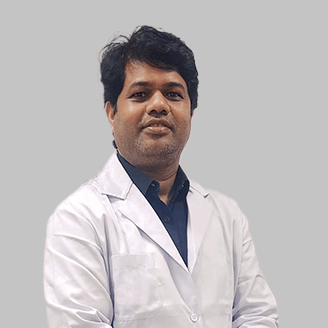-
Doctors
-
Specialities & Treatments
Centre of Excellence
Specialties
Treatments and Procedures
Hospitals & Directions HyderabadCARE Hospitals, Banjara Hills CARE Outpatient Centre, Banjara Hills CARE Hospitals, HITEC City CARE Hospitals, Nampally Gurunanak CARE Hospitals, Musheerabad CARE Hospitals Outpatient Centre, HITEC City CARE Hospitals, Malakpet
HyderabadCARE Hospitals, Banjara Hills CARE Outpatient Centre, Banjara Hills CARE Hospitals, HITEC City CARE Hospitals, Nampally Gurunanak CARE Hospitals, Musheerabad CARE Hospitals Outpatient Centre, HITEC City CARE Hospitals, Malakpet Raipur
Raipur
 Bhubaneswar
Bhubaneswar Visakhapatnam
Visakhapatnam
 Nagpur
Nagpur
 Indore
Indore
 Chh. Sambhajinagar
Chh. SambhajinagarClinics & Medical Centers
Book an AppointmentContact Us
Online Lab Reports
Book an Appointment
Consult Super-Specialist Doctors at CARE Hospitals

Leukaemia
Leukaemia
Best Leukaemia Treatment in Hyderabad, India
Leukaemia is a term used for the cancer of the body’s blood-forming tissues. This includes the bone marrow and the lymphatic system. Cancer is the abnormal growth of cells that can be found anywhere in the body. In the case of leukaemia, this rapid growth of abnormal cells occurs in the bone marrow.
Bone marrow is the soft, spongy tissue present in the centre cavity of the bones. The blood cells are produced in the bone marrow. These blood cells help in the healthy functioning of our body. The red blood cells carry oxygen and all the other essential minerals to the tissues and organs of the body, while the white blood cells help fight the infection. Platelets, on the other hand, help in keeping away the blood clots.
Some forms of leukaemia are more commonly found among children, while there are some forms that are diagnosed among adults as well. Leukaemia usually involves the white blood cells, which perform the function of fighting infections or foreign bodies. In the case of leukaemia, the bone marrow produces excessive white blood cells that are abnormal and function improperly.
How does Leukaemia develop?
The initial stage of every blood cell is the hematopoietic stem cells. These stem cells undergo multiple changes before taking the adult form.
In the case of a healthy person, the adult form of these cells would be Myeloid cells, which develop in the red blood cells, platelets and some areas of the white blood cells, and Lymphoid cells that take the shape of certain types of white blood cells.
However, people diagnosed with leukaemia will have a condition where one of the blood cells will start multiplying rapidly. This aggressive growth of the abnormal cells or the leukaemia cells takes their place inside the bone marrow. This abrupt growth of the abnormal cells does not take part in the functioning of the body. Because they take up the space occupied by the normal cells, the latter is forced to be released into the bloodstream so as to pave the way for the cancer-causing cells. As a result of this, the body’s organs will not get the adequate oxygen required to sustain the functions of the organs, and the white blood cells will lose their ability to fight infections.
Different types of Leukaemia
There are two major types of Leukaemia based on how quickly this disease progresses:
- Acute Leukaemia
This is very aggressive leukaemia, where the abnormal cells divide and spread at an alarming rate. This is the most common paediatric cancer.
- Chronic Leukaemia
Chronic leukaemia can have both immature and mature cells. Chronic leukaemia is less aggressive as compared to acute leukaemia. This worsens over time, and the symptoms may not be apparent for many years. Adults are more prone to chronic leukaemia than children.
The types of leukaemia based on the cell type are:
- Myelogenous/ Myeloid Leukaemia
This type of leukaemia originates from the myeloid cell line.
- Lymphocytic Leukaemia
These form in the lymphoid cell line.
Symptoms
- Fever
- Chills
- Bone pain
- Sudden weight loss
- Fatigue
- Swollen lymph nodes
- Enlarged liver or spleen
- Excessive sweating
- Red spots visible on the skin
- Easy bleeding or bruising
Causes of leukaemia
The exact cause of acute leukemia remains uncertain, but certain factors can elevate the risk for some individuals, including:
- Exposure to high levels of radiation
- Exposure to specific chemicals, such as benzene
- Infection with viruses like the Human T-Cell Leukemia Virus (HTLV).
- In chronic myeloid leukemia cases, a majority of individuals possess an abnormal chromosome known as the Philadelphia chromosome. Additionally, exposure to elevated radiation levels has been associated with this condition.
Risk Factors of Leukaemia
- Genetic disorders play a major role in the development of leukaemia.
- Heavy smoking can increase the risk of acute myelogenous leukaemia.
- Heavy exposure to certain chemicals, such as benzene, found in the gasoline and chemical industry, can add to the threat of contracting leukaemia.
- A family history of leukaemia can also add to the risk.
However, it is also to be noted that in many cases none of these factors can come into play. The reasons for such cases remain unknown.
Diagnosis of Leukaemia
- A physical exam is performed where the doctors look for any visible signs and symptoms of leukaemia. These signs can include paleness due to anaemia, swelling of the lymph nodes, and enlargement of the liver and spleen.
- Another method of diagnosis is collecting samples of blood. A study of this blood sample will help the doctor detect an abnormal level of red or white blood cells or platelets. The blood test can also help in diagnosing the presence of any existing leukaemia cells.
- Another exam performed is the bone marrow test, which is collected from the hipbone. This is removed with the help of a long, thin needle, which is then sent to the laboratory for examination.
However, not every leukaemia type circulates in the blood. Most of them originate in the bone marrow.
Treatment of Leukaemia
Depending on the age, overall health, type of leukaemia and whether it has spread to other parts of the body, the doctor will suggest the treatment that will have the most effective results. These treatments include:
- Chemotherapy is the most common treatment for leukaemia. This treatment utilises drugs to kill cancer cells. Depending on the type of leukaemia, the doctors can prescribe a single drug or a combination of drugs.
- Another method used is targeted drug therapy. The drugs are prescribed, focusing on specific abnormalities of the cancer cells. These drugs are targeted to kill the growth of these cancer cells. This treatment is prescribed only after testing if it will work on the kind of leukaemia the patient is diagnosed with.
- Radiation therapy is another treatment used to treat leukaemia. High-energy x-rays or protons are used to damage the leukaemia cells and stop their growth.
- Another effective treatment used is the bone marrow transplant or the stem cell transplant. This is a process where the healthy stem cells are restored by removing the unhealthy bone marrow with leukaemia-free stem cells in order to propagate the growth of healthy bone marrow.
- Immunotherapy is also an effective option for the treatment of leukaemia. This is the process where the immune system of the patient is boosted in order to fight the cancer cells.
Our Doctors
-

Dr. Ritesh Tapkire
MBBS, MS, Mch (Surgical Oncology)
Surgical Oncology
View More -

Dr. Ravi Jaiswal
MBBS, MD (Medicine), DNB (Medical Oncology), MRCP (UK), ECMO.Fellowship (USA), Medical Oncologist & Hemato-Oncologist (Adult & Pediatric) Gold Medalist
Medical Oncology
View More -

Dr. Amit K Jotwani
MD, FHPRT, FSBRT, FCBT, AMPH(ISB)
Radiation Oncology
View More -

Dr. Avinash Chaitanya S
MBBS, MS (ENT), Fellow in Head and Neck Surgical Oncology
Surgical Oncology
View More -

Dr. Byreddy Poojitha
MBBS, MD, DM
Haematology
View More -

Dr. Deepak Koppaka
MBBS, MD (Radiation Oncology), DM (Medical Oncology)
Medical Oncology
View More -

Dr. Geetha Nagasree N
MBBS, MD (OBG), MCh (Surgical Oncology)
Surgical Oncology
View More -

Dr. Jyothi A
MBBS, DNB(General Surgery), DrNB (Surgical Oncology)
Surgical Oncology
View More -

Dr. M. A. Suboor Shaherose
MBBS (Osm)MD (Gen Med) DrNB (Medical Oncology), ECMO
Haematology, Medical Oncology
View More -

Dr. Metta Jayachandra Reddy
MS General Surgery(AFMC Pune), DNB General Surgery, MCh Surgical Oncology(Double Gold Medalist), FAIS, FMAS, MNAMS, FACS(USA), FICS(USA)
Surgical Oncology
View More -

Dr. Pragna Sagar Rapole S
MBBS, MD (Radiation Oncology)
Radiation Oncology
View More -

Dr. Saleem Shaik
MBBS, MS (General Surgery), DrNB Surgical Oncology
Surgical Oncology
View More -

Dr. Sarath Chandra Reddy
MBBS, DNB (Radiation Oncology)
Radiation Oncology
View More -

Dr. Satish Pawar
MBBS, MS (General Surgery), DNB (Surgical Oncology), FMAS, FAIS, MNAMS, Fellowship GI Oncology
Surgical Oncology
View More -

Dr. Suyash Agarwal
MBBS, General Surgery (DNB), Surgical Oncology (DrNB)
Surgical Oncology
View More -

Dr. Swaroopa Chundru
MBBS, DM (Medical Oncology)
Medical Oncology
View More -

Dr. Syed Touseef
MBBS, DNB, PDCR
Radiation Oncology
View More -

Dr. Vikranth Mummaneni
MBBS, MS, DNB
Surgical Oncology
View More -

Dr. Yugandar Reddy
MBBS, MS (General Surgery), DNB (Surgical Oncology)
Surgical Oncology
View More
Frequently Asked Questions
Still Have a Question?

